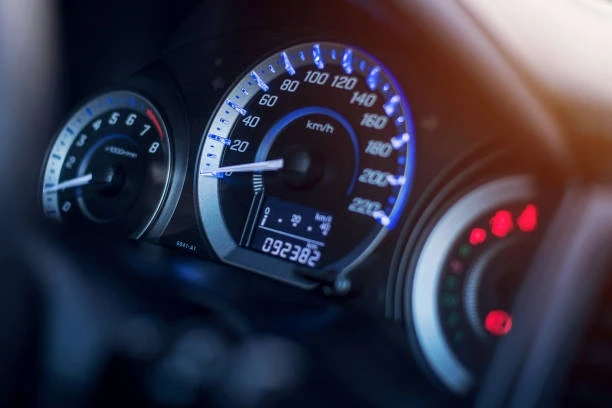Odometers are a make-or-break part of today’s cars, which many people simply take for granted. By knowing how an odometer works, one can get to know about the mechanical brilliance and modern digital techniques that they apply in order to give you accurate readings, which are so helpful when you want to maintain your vehicle, resell it or just stay safe on the road.
Odometers have in the past been comprised almost exclusively of mechanical components. In systems like these, a set of gears linked to the vehicle’s transmission would spin numbered drums every time the wheels turned. Each completed a set distance (often in miles or kilometres). Each time one drum made a full revolution, it would carry the next drum, enabling the odometer to incorporate continuous digits. This is a simple method on which how an odometer works depends, and yet it only involves the physical act that generates data readable by everyone.
In the modern electronic era of vehicles, computers using sensors estimate and calculate the distance driven, and with newer models, also include such features as average speed. Instead of gears, the speed sensor mounted on the wheel hub or transmission sends electrical pulses to a microprocessor. A beat corresponds with a fraction of a mile or a kilometer, and the processor determines an overall distance travelled over time. This information can be displayed on the digital screen, which could also house trip meters, service reminders, and fuel efficiency data. Yet learning about how an odometer works in this case, you can discover a combination of sensor technology, processing of information and real-time presentation that increases the precision of indications while minimizing wear by mechanical details.
Odometers are also important for legal and financial reasons. Reliable readings are essential for establishing a vehicle’s market value, scheduling maintenance and avoiding odometer fraud. Knowing how an odometer works and the limitations of its purpose allows consumers to identify genuine mileage and suspect tampering, which is an essential part of owning a vehicle responsibly.
Whether electronic or mechanical, an odometer does the same thing - it tracks how far the wheels have travelled (via their angular rotation) in order to determine distance. It is this combination of precision engineering, accurate sensors and dependable software that means this deceptively simple device still plays a crucial role as a barometer for vehicle utilization. As automobile technology continues to develop, the odometer might continue to evolve as well, with more intricate telematics and connectivity; however, its primary purpose will always be connected to the basic question of just how an odometer works.
Andrew Richardson is the author of this Article. To know more about manufacturer's warranty law please visit our website: allenstewart.com



